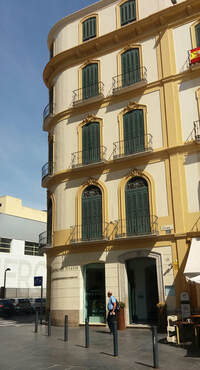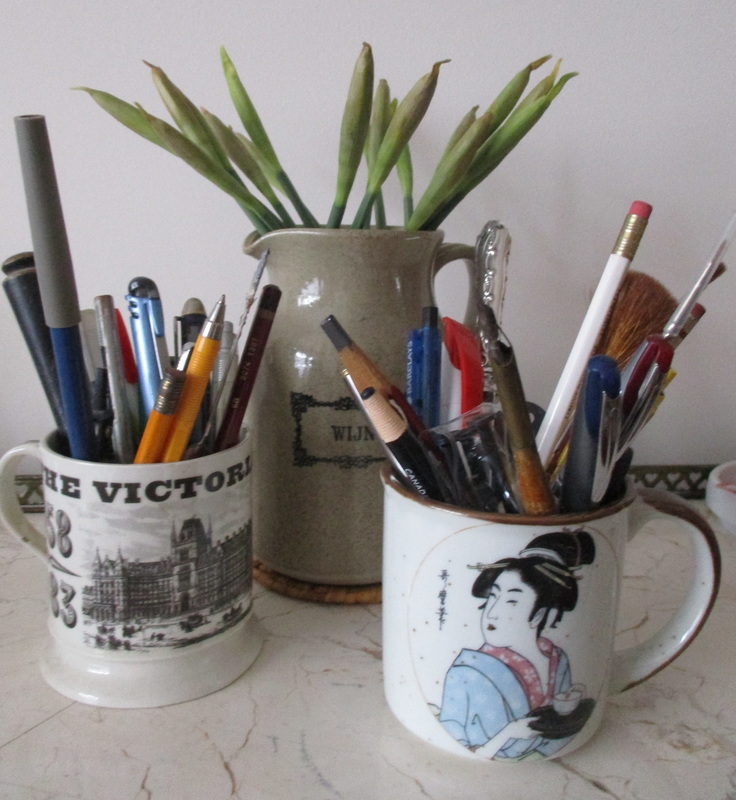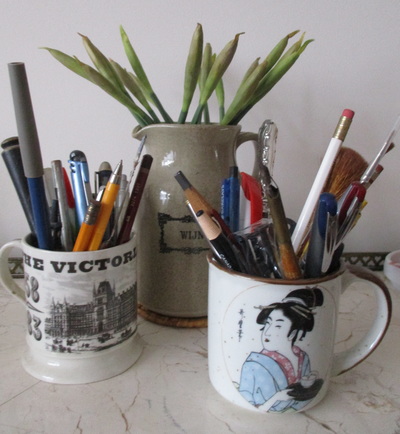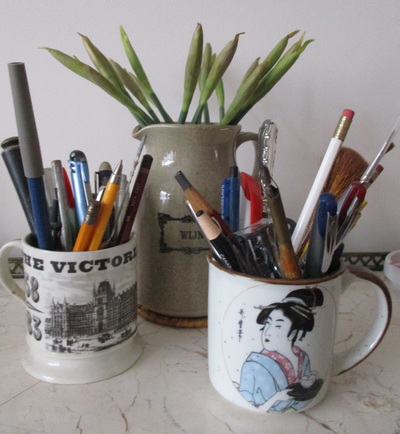|
Pablo Picasso was born on October 25th 1881 at house No 15 in Plaza de la Merced, Malaga. The family lived in a third floor apartment with a grandmother and maternal aunts; with two sisters and a brother to come, there can have been little room to spare. The building is still there but nothing remains of the original interior; instead, the curators offer displays of artefacts and some furnishings that suggest or are similar to what is known of his home. Why visit a birthplace? What can it tell us that isn’t available in a biography? The most obvious answer is the physical and visual impact of the building and the surrounding area. Plaza de la Merced is in a central area of Malaga. The houses are tall, generously proportioned and well mannered with shutters and balconies. This would have been a pleasant environment with a sense of status but also with close neighbours and a community. And what could be more nurturing and secure than the sunny climate …that brightness of the blue sky and the reliable heat. There is no dourness here.  Picasso’s father, Don Jose Ruiz, was a technically competent but uninspired painter of still lifes who taught at the School of Fine Arts and was a curator of the municipal collection. I cannot remember ever having seen an example of his work before. But here in the house many of his canvasses have been gathered together with some of Picasso’s earliest works. They bring home the fact that Picasso was born into a world saturated with art and painting. And some of his subjects – doves in particular – are there in his childhood. Of the various artefacts – the christening gown, the documentation, photographs – little comes to life. Young Pablo lived here for only his first 10 years before the family moved to La Corunna and then to Barcelona. Still those first ten years are very important. Picasso’s first school was just round the corner and close to his father’s place of work. He did not like school and often played truant. He was both too clever and already too interested in art. But that close proximity and the maze of narrow streets that make up the old centre of Malaga, and the ships and coast near by – all help to give one a feeling of Picasso’s beginnings – what he saw at an early age – and what contributed to his felt experience. Birthplaces are one thing and endings are another. There may be a trajectory but we do not have to be defined by our beginnings and Picasso certainly was not. However modest our talents by comparison, still, like him we can choose to be defined by our potential. |
Victoria Manthorpeauthor and feature writer Blog
Your email will only ever be used to send you new posts and you can unsubscribe at any time. For more information, please check Victoria's privacy statement.
Archives
April 2024
Categories
All
|



